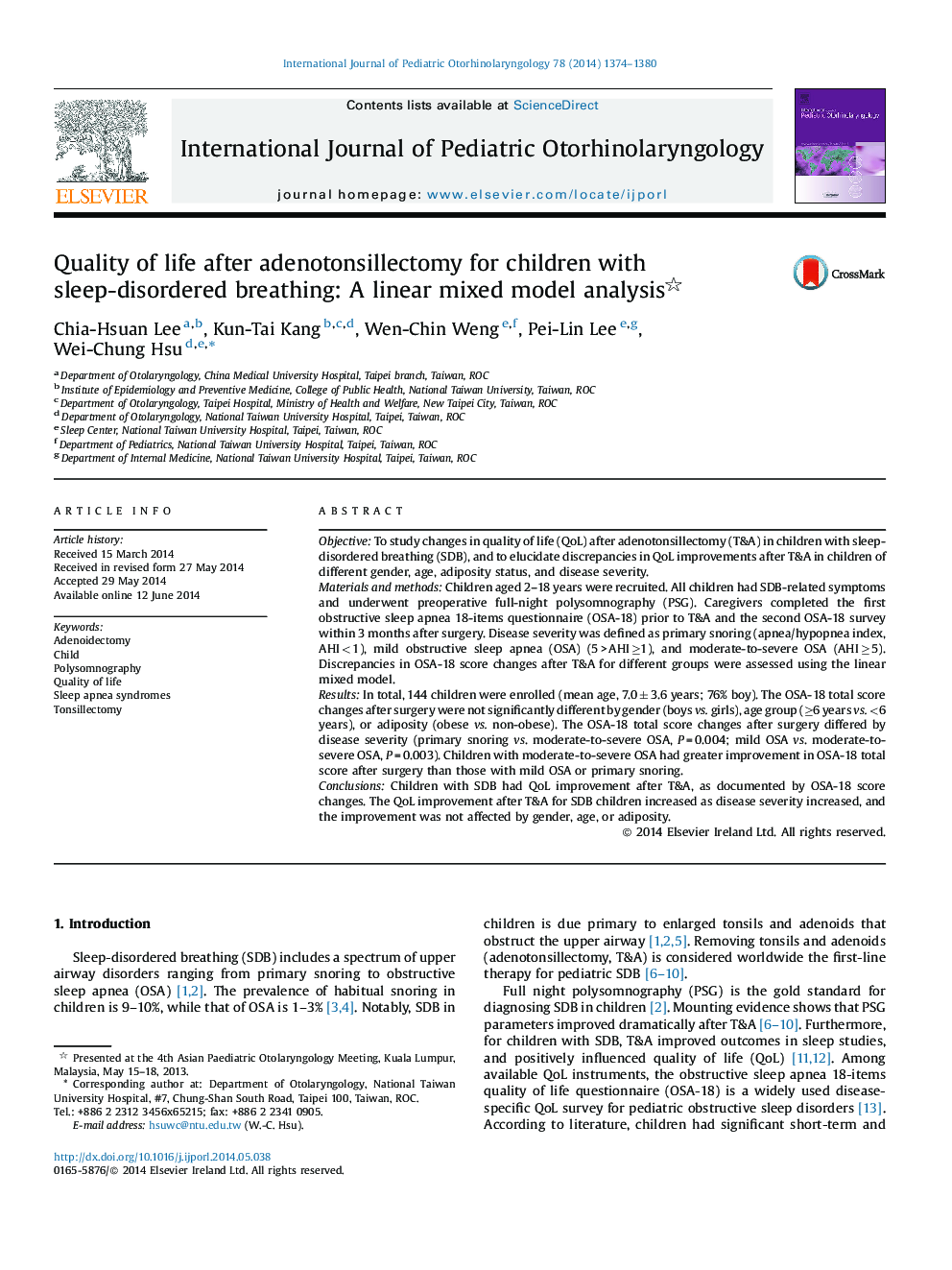| Article ID | Journal | Published Year | Pages | File Type |
|---|---|---|---|---|
| 4112458 | International Journal of Pediatric Otorhinolaryngology | 2014 | 7 Pages |
ObjectiveTo study changes in quality of life (QoL) after adenotonsillectomy (T&A) in children with sleep-disordered breathing (SDB), and to elucidate discrepancies in QoL improvements after T&A in children of different gender, age, adiposity status, and disease severity.Materials and methodsChildren aged 2–18 years were recruited. All children had SDB-related symptoms and underwent preoperative full-night polysomnography (PSG). Caregivers completed the first obstructive sleep apnea 18-items questionnaire (OSA-18) prior to T&A and the second OSA-18 survey within 3 months after surgery. Disease severity was defined as primary snoring (apnea/hypopnea index, AHI < 1), mild obstructive sleep apnea (OSA) (5 > AHI ≥1), and moderate-to-severe OSA (AHI ≥ 5). Discrepancies in OSA-18 score changes after T&A for different groups were assessed using the linear mixed model.ResultsIn total, 144 children were enrolled (mean age, 7.0 ± 3.6 years; 76% boy). The OSA-18 total score changes after surgery were not significantly different by gender (boys vs. girls), age group (≥6 years vs. <6 years), or adiposity (obese vs. non-obese). The OSA-18 total score changes after surgery differed by disease severity (primary snoring vs. moderate-to-severe OSA, P = 0.004; mild OSA vs. moderate-to-severe OSA, P = 0.003). Children with moderate-to-severe OSA had greater improvement in OSA-18 total score after surgery than those with mild OSA or primary snoring.ConclusionsChildren with SDB had QoL improvement after T&A, as documented by OSA-18 score changes. The QoL improvement after T&A for SDB children increased as disease severity increased, and the improvement was not affected by gender, age, or adiposity.
